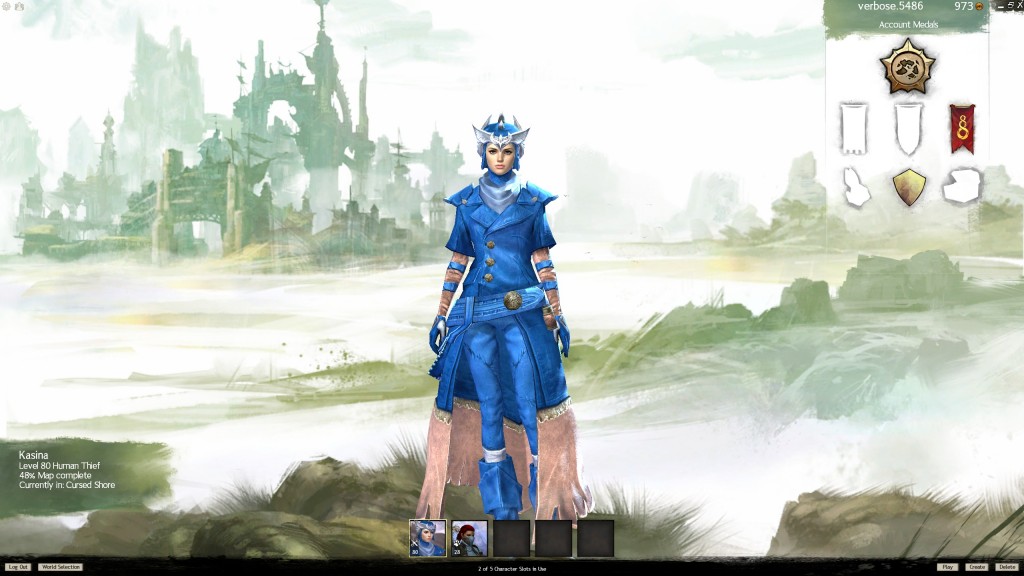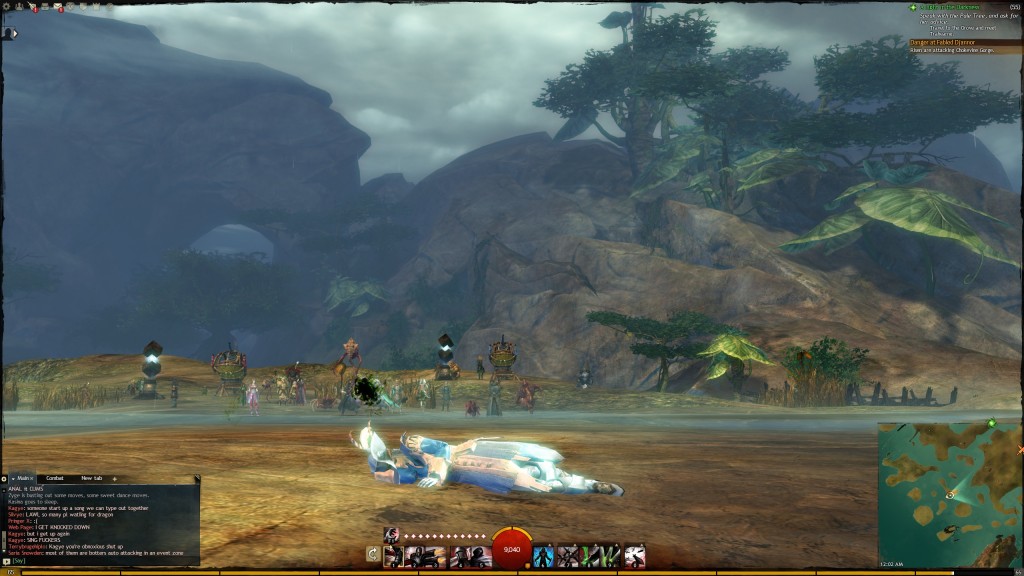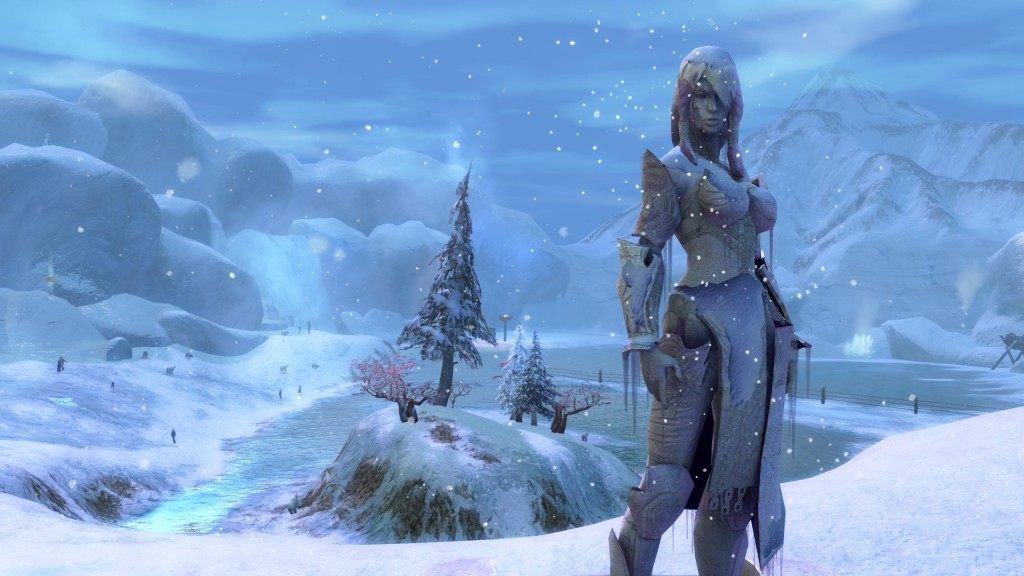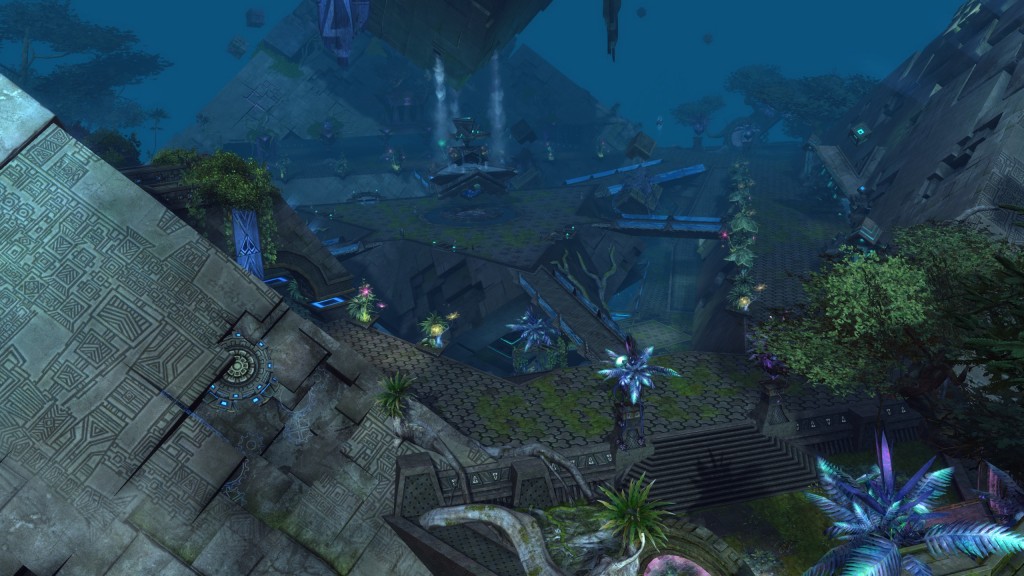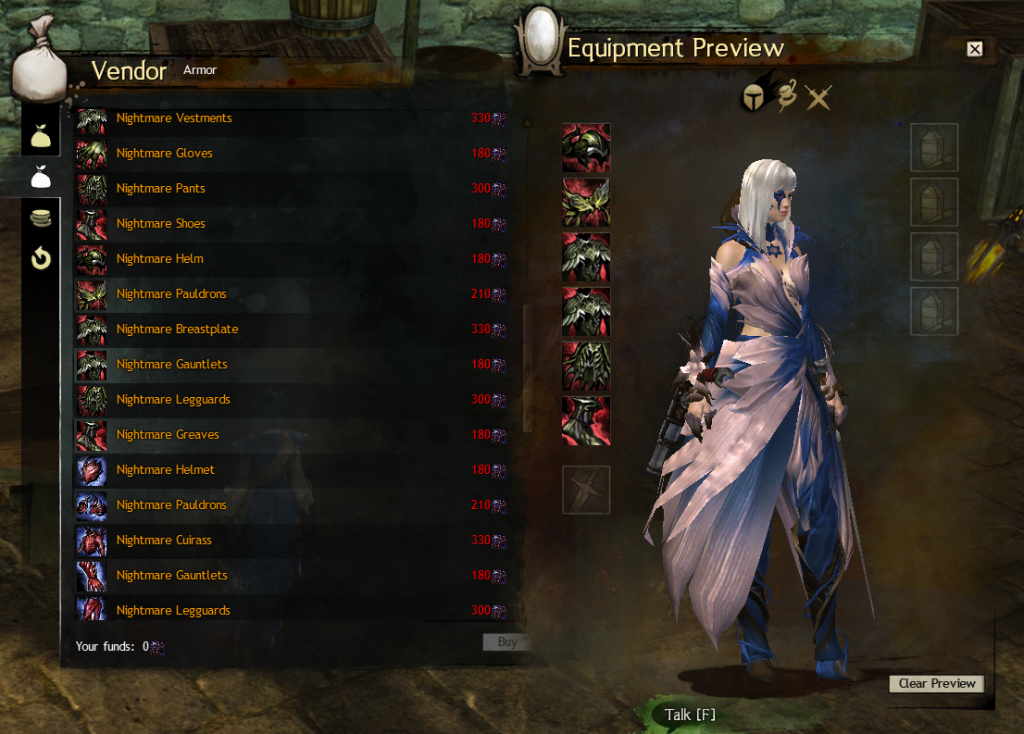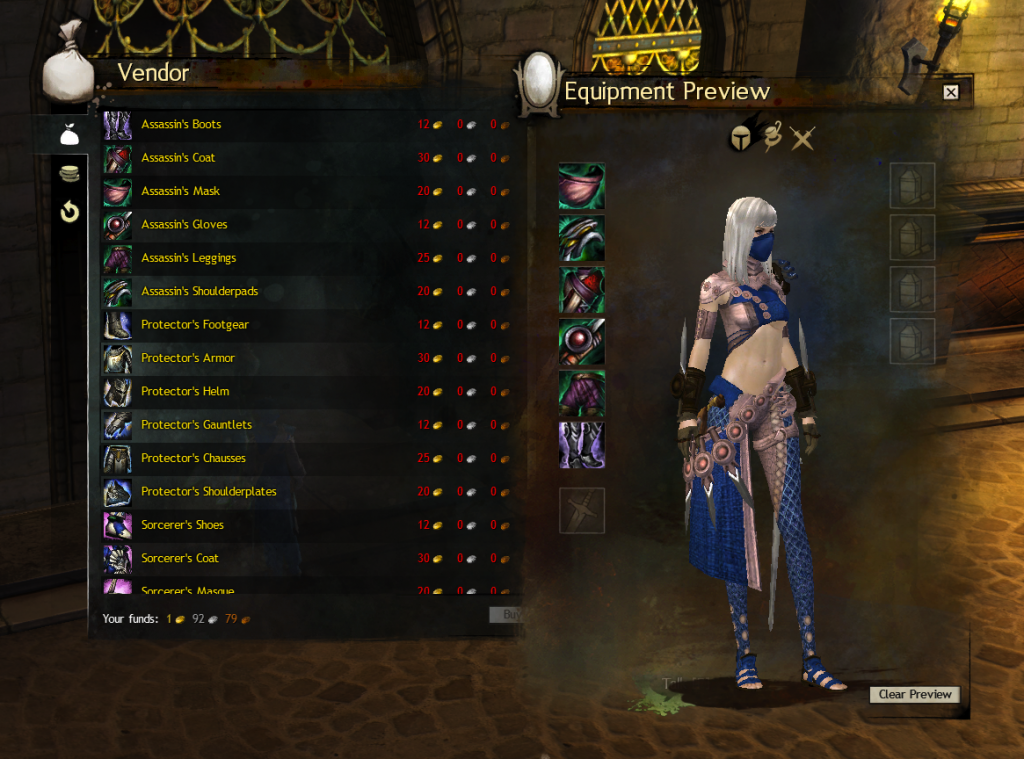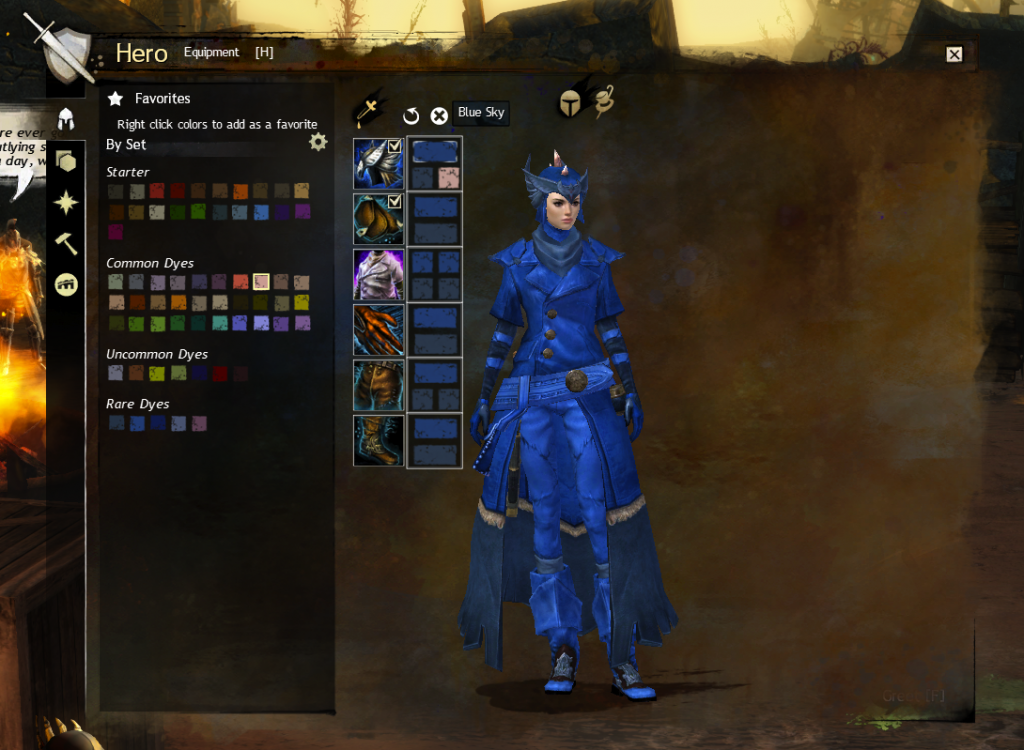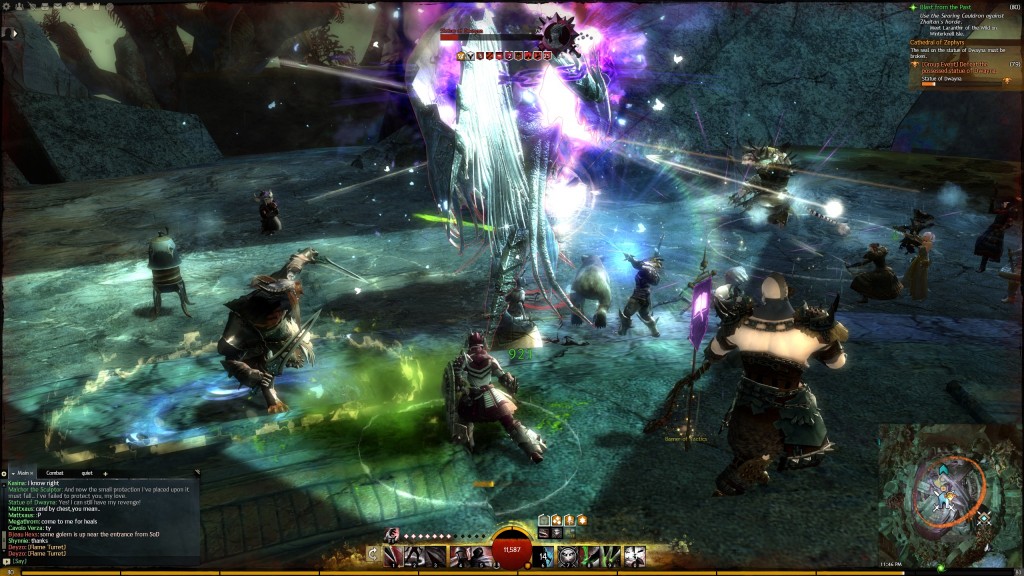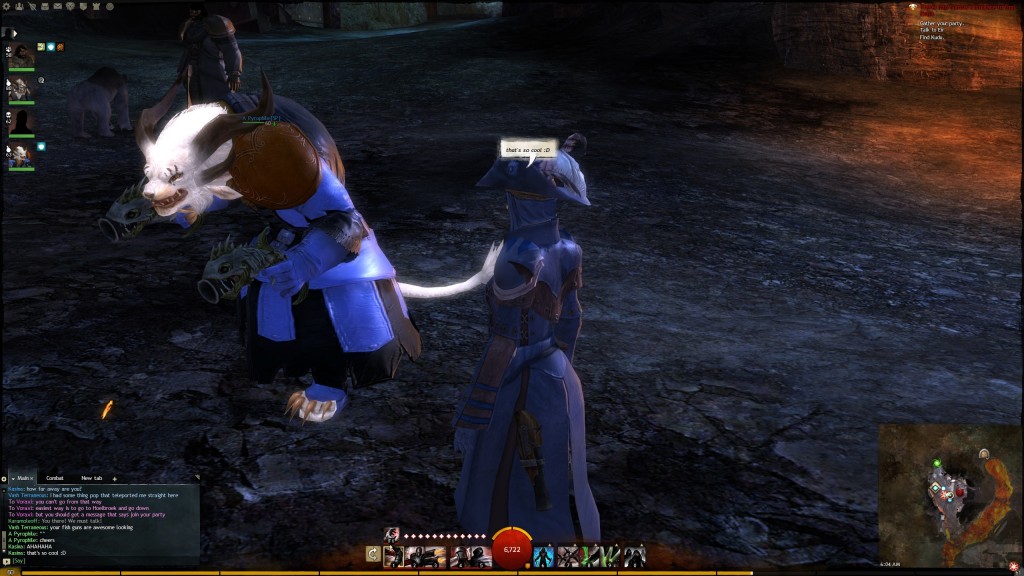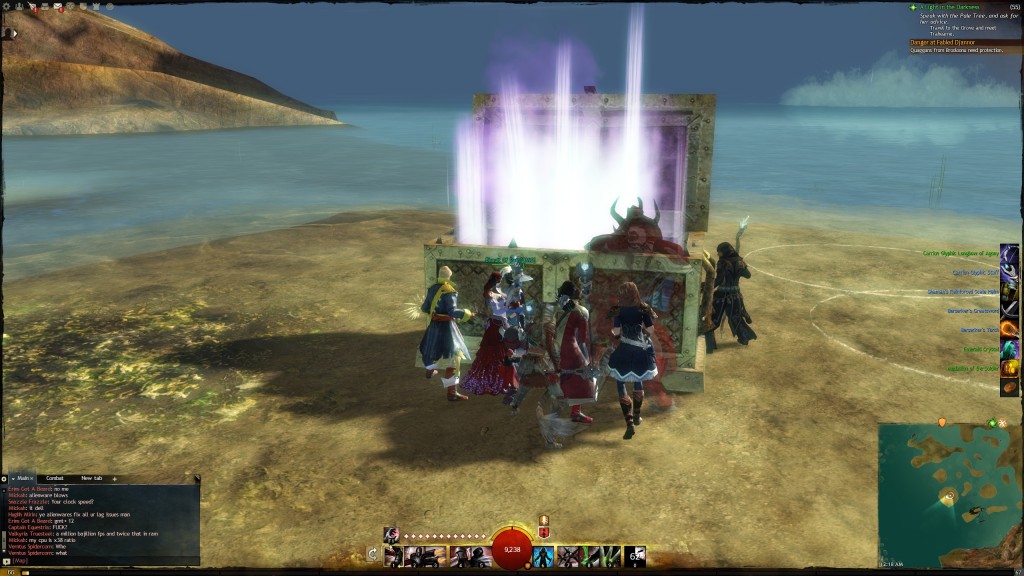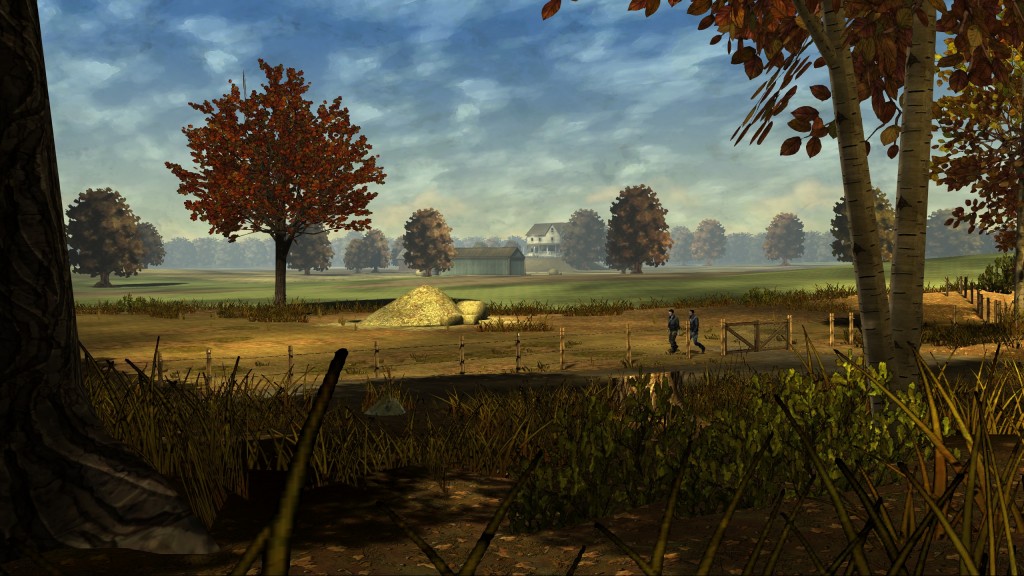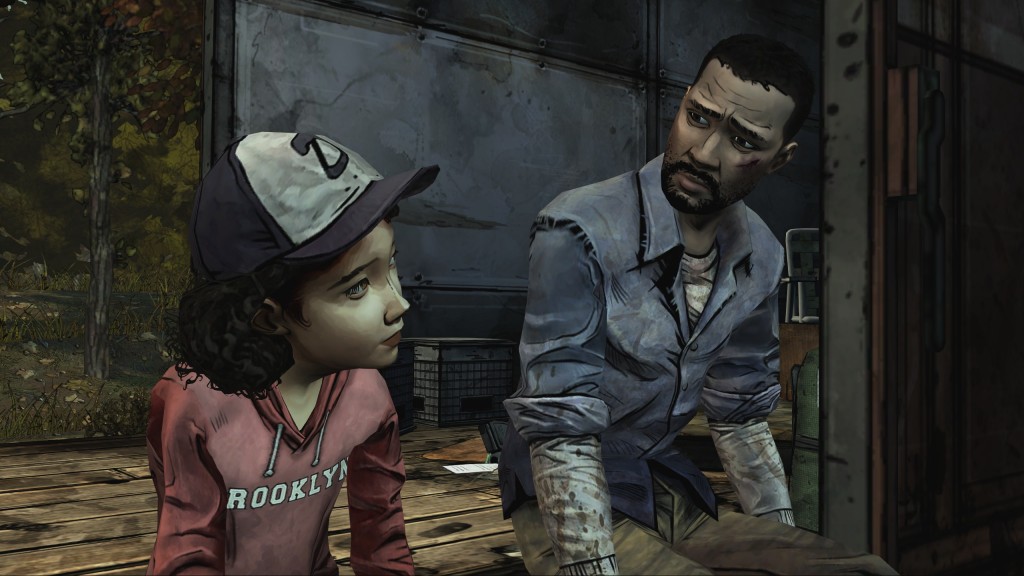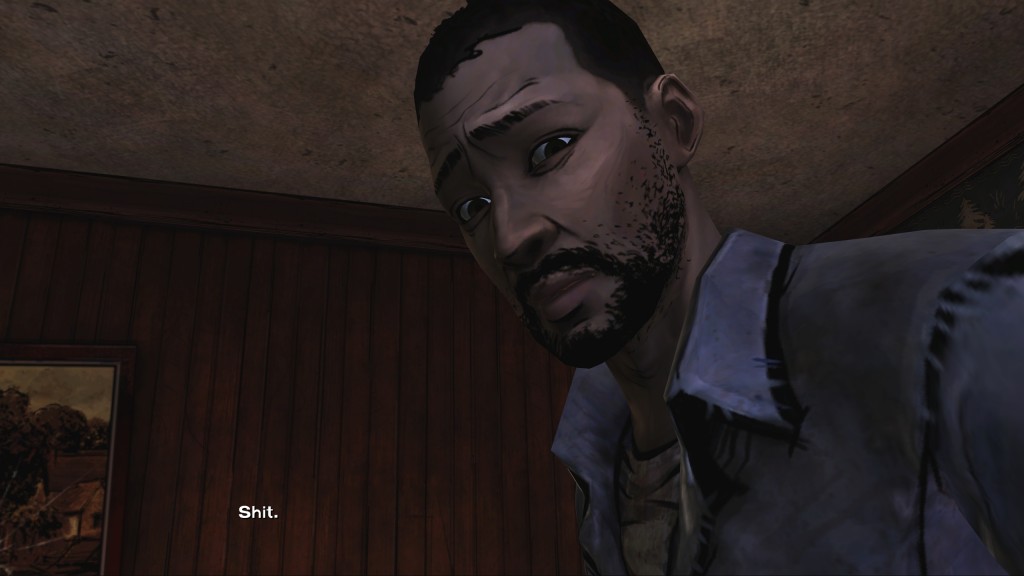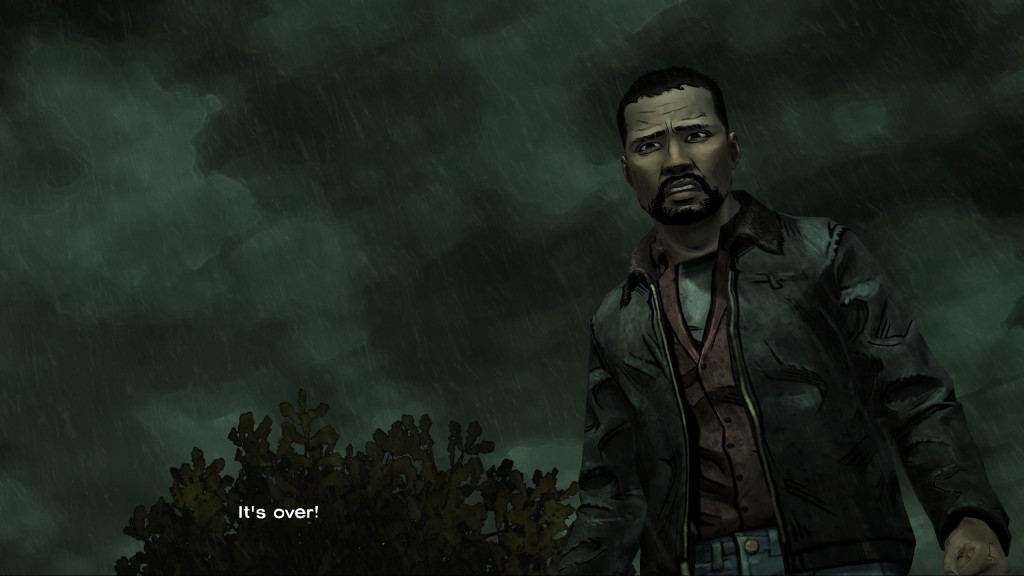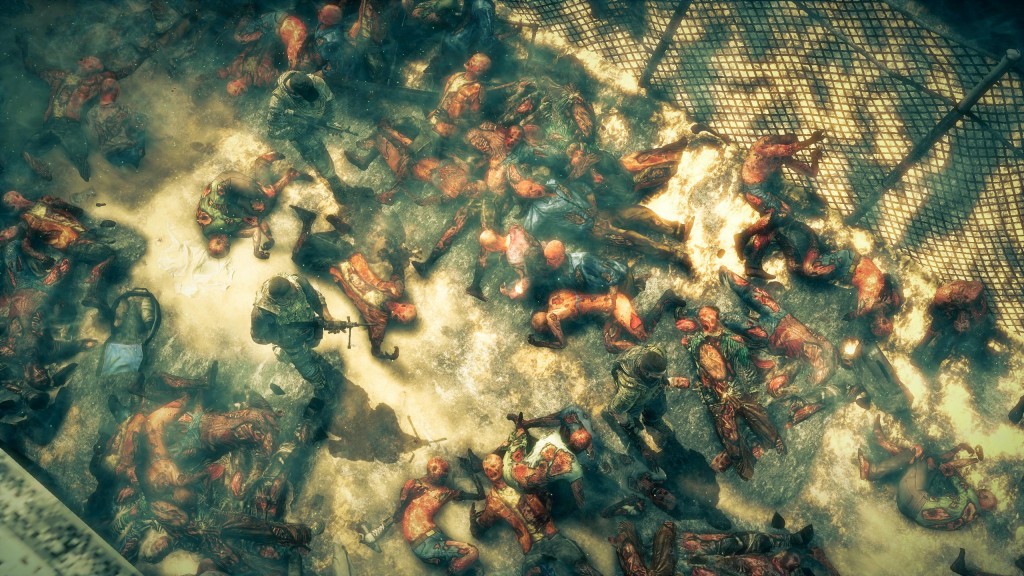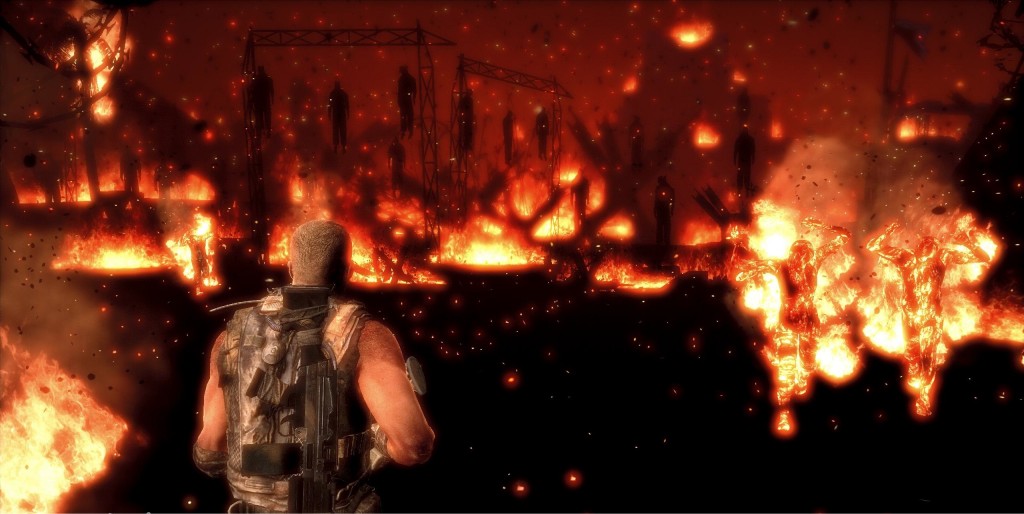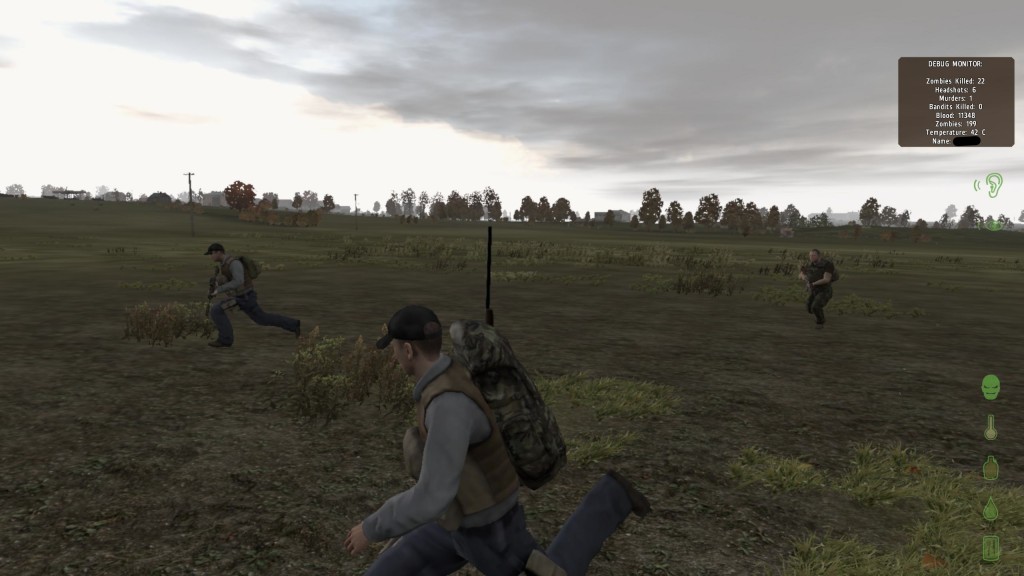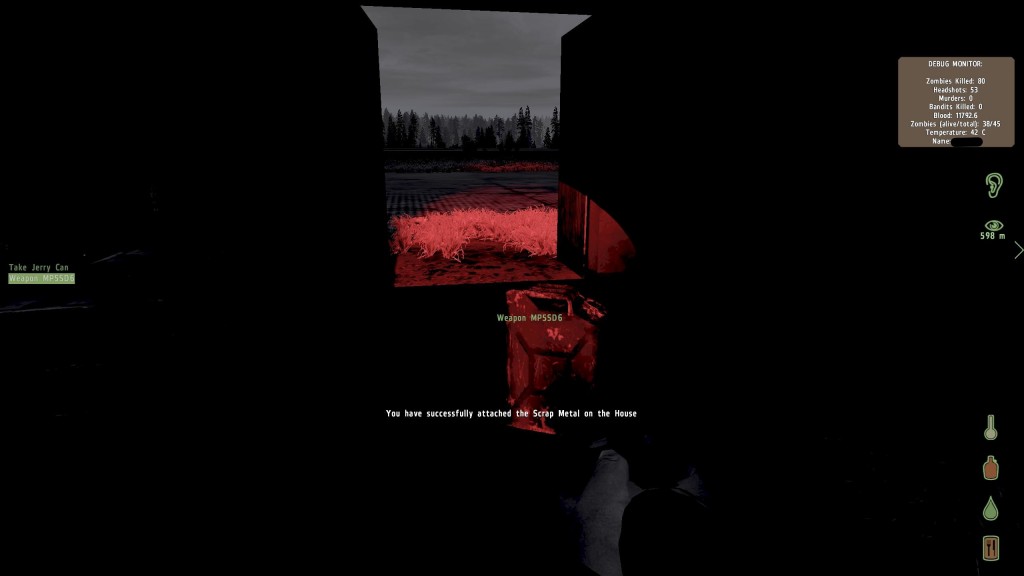Wow, is this the first either/or post in a long, long time?
Tag Archives: game
Why Guild Wars 2 is perhaps the first MMORPG that agrees with me
Alternative title: a somewhat pensive review of Guild Wars 2 from the perspective of someone who has not completely immersed themselves into the stream of MMORPG culture, but has simply splashed around in the bathing pool, presented as a series of sections separated by descriptive titles
I’ve been playing Guild Wars 2 ever since Day Z kind of fell out of fashion, and I can honestly say it’s one of the best MMORPGs I’ve ever played. Mind you, that isn’t a huge list: I dabbled in WoW at one stage, got to level 60 within a respectable time frame, and I played the heck out of Star Wars: The Old Republic during its beta period. I enjoyed both of those games, to be sure, but there was always something that wasn’t quite right about each: WoW felt way too inundated with lore and background storylines, like it was some kind of Lord-of-the-Rings-style plot but for every single character. There were stories behind everything, but I just couldn’t care less about them. They were uninteresting, boring, whatever you want to call it.
The Old Republic was fine in that regard, as the Star Wars universe is a little more forgiving — there’s still a copious amount of backstory, but because it’s Star Wars, it’s forgiven, and at times, welcomed — people just can’t enough of those Jedi, I tell you. But the one thing that grated about The Old Republic was that it kind of felt tacky, like it was trying too hard to monetise something that should have come naturally. Suddenly the Star Wars universe wasn’t just about the big bad Sith and killing Stormtroopers, it was also about repairing droids, repairing things that went wrong, negotiating between various underworld characters. It felt like you were playing out the entire lives between what you see in the movies, which might have appealed to some, but felt overdone to others. Now that I think about it The Old Republic tried too hard in a lot of areas. That was probably the main reason why I didn’t bother renewing my subscription after the first month.
Guild Wars 2 is much, much different to the two aforementioned games. It’s still a fantasy RPG in that the environment isn’t, strictly-speaking, “real”, and at first I thought this would be a big downside — “ugh, not another fantasy RPG!” — but I now realise it wouldn’t have worked any other way.
I didn’t even think I would be buying it, at first. I’m not entirely sure what convinced me to, in the end, but I’m extremely glad I did, because Guild Wars 2 is a great game. Not so stooped in lore as to be overburdened, not trying too hard for the sake of a few pennies, but just right. The right mix of a compelling personal storyline, even if some of the initial choices were a little ridiculous (my biggest regret was not joining the circus? Really?), combined with good quest and event mechanics, and of course, the right amount of replayability. And perhaps one of the biggest pluses: no subscription fees.
It’s about exploration
One of my biggest features about Guild Wars 2 is the fact that it’s not all “go here, kill/collect/escort this person/thing, come back” — at least, it doesn’t have to be. There are quests like that, of course, but what’s really great is that once you’re in a new location, you can leave the questing until later and just explore. Guild Wars 2 has a big focus on exploration, and you can visit Vistas which count towards your overall region and map completion. Some of these Vistas are easy to get to, others require lots of jumping and falling, but all have a great view of some feature or structure in the game world.
And that’s not all — through trial and error, players have discovered jumping puzzles in almost every region. They’re not marked on your map, and the only real way people would have discovered them is via exploration. They’re fiendishly hard, and sometimes what you think is a jumping puzzle is actually just you jumping up and down mushrooms.
Like I said, Guild Wars 2 isn’t just a linear quest grind. It’s about exploration, and it’s a better game for it.
It’s about aesthetics
Guild Wars 2 is the same as other MMORPGs in that you’re always on the lookout for better-specced gear than the stuff you currently have, but different to other MMORPGs in that there’s an aesthetics element to it, as well. Sometimes you can’t bear to swap out your current Greatsword for one that has +999 Critical Hit Damage because it just looks crap on your character. I came across a dude that had fish heads for pistols one day, and that was awesome. Thankfully, if you do come across your next big Longbow that has vastly better stats but looks much worse than the Longbow you currently own, you can simply transmute (read: combine) the item so it’ll have the better stats of the Longbow you just found, but look just as awesome as the Longbow that you’ve been using.
Choosing armour is perhaps even more stressing for the player that cares about aesthetics, because even though there’s bonuses for having armour with the same rune/sigil/accessory, sometimes having the set doesn’t look as cool as these other great pants you crafted yourself. Or maybe you’re looking for a different outfit entirely — the best thing is you can preview how a certain piece of armour looks on your character before you spend the clams.
I mean, if you needed any more proof Guild Wars 2 is all about the aesthetics: there are random dye drops that let you change the colour of your armour, for crying out loud. People seem to gravitate towards black and white colours, but there’s plenty that can be done with an interesting colour palette. Changing the colour scheme could be all you need to give you character a new lease on life, aesthetics-wise.
It’s probably a little girly, but the aesthetics portion of Guild Wars 2 is fantastic. It probably makes up for not having as many character/face customisations as, say, the Mass Effect series.
You don’t have to play with others (but it’s a little better if you do)
Another thing I like about Guild Wars 2 is that you don’t have to play with friends — at least, not all the time. Because it’s all PvE, everyone in the region has common goals if you’re all doing quests or random events — if you’re doing a quest or an event, everyone gains with your participation, so it’s like everyone is always in a big group together, doing the same quests for the common good. I played solo all the way up to level 80 (the current level cap), and it wasn’t until I hit later stages of my personal story and later regions that I really found running around with someone else to be useful.
Speaking of which, your personal story is perhaps one of the only times (at least right from the outset) that you might want someone else along for the ride. You make all the decisions, of course, but sometimes it’s handy having someone else in your own personal story instances to help out with the combat, purely because the NPCs can be a little useless at times.
Just about the only time you’re forced to group with other players is when doing dungeons, and that’s to be expected.
Overall, Guild Wars 2 is pretty great. It’s the first MMORPG that I’ve really enjoyed, and for all the reasons above; exploration, aesthetics, and the not-pared down solo play. I’ve only scratched the surface of the game, becuase there’s so many aspects to it: there’s World vs World vs World, which is kinda puts different “worlds” against each other (think massive battlefields, contention for castles etc, but with everyone on your server playing for the same team), and then there’s also player-vs-player, which is kinda like WvWvW except on a smaller scale.
There’s dynamic events which everyone can do at any time, and oh — perhaps one of the best features of any MMORPG, ever — instanced loot, which means your loot is totally separate to others. No more “rolling” for the best loot when you kill a boss, bceause you everyone gets their own loot according to how much they participated in any given event (or their own standard quest rewards). It means you’re guaranteed an equal shot at that rare pirate coat you’ve been hanging out for as everyone else, all the way down to gather-able items in the game world (trees, ores, berries, and so on).
I get that MMORPGs aren’t for everyone. Doing quests and crafting can seem a little grind-y at the best of times (not to mention be a huge time suck), but while Guild Wars 2 shares many similarities to traditional MMORPGs, it’s different enough to separate it from the pack.
And that just makes it all the more enjoyable.
You Should Be Playing The Walking Dead
Look, I’m not kidding around here. If you’re at all serious about games, or watch and enjoy the TV series by the same name, you should play The Walking Dead on whatever platform you feel most comfortable with.
The Walking Dead isn’t my first interactive adventure from Telltale Games. That honour has been bestowed to a smaller game called Puzzle Agent, which is kinda similar in a lot of ways — there isn’t such a focus on puzzle mechanics like there is in Puzzle Agent, but you do get the same explorative, story-driven gameplay, accompanied by a healthy dose of dialog trees.
Telltale Games are quickly becoming the masters of the interactive adventure genre on multiple platforms, and for good reason: most of the story-based games they make are of a very high standard.
For those that aren’t in the loop about The Walking Dead the game, but are a little familiar with the TV series (and possibly even the comic), you’ll be pleased to know The Walking Dead follows the same storyline as the TV series.
The Walking Dead‘s lead character is Lee Everett, a guy who’s on his way to prison when the cop car that’s he’s getting a ride in hits a zombie, and from there, all hell breaks loose. At first he’s confused about what just happened, and why he’s just had to shoot the cop that was taking a ride with, and then he starts to understand that there’s something very, very wrong about the world he’s woken up in.
Which is actually one of the best things about The Walking Dead; there’s real, believable characters. Just like the TV series, you soon meet up with a group of fellow survivors who seem alright, and you quickly form relationships with them. There’s hard-ass Kenny who’s just looking out for his son and wife, there’s can’t-work-out-batteries Carley, the reporter who’s actually a dead-eye with a pistol, and there’s even a few military types who take charge of the group and make the decisions (but ultimately, you make the call).
But the game wouldn’t be complete without some kind of purpose outside of simply surviving the zombie apocalypse, and in The Walking Dead, your purpose is Clementine. She’s one of the first characters you meet in the series, and by that time, she’s already been surviving on her own for a few days. You decide to take her under your wing, and that’s that: the status of her parents is a little murky, and essentially, she’s the little impressionable girl that looks up to you — even though you’re not her real dad, you’re just a guy/some neighbour/silence.
That’s pretty much how the first episode starts. The Walking Dead is released as episodic content: as of writing, three out of five planned episodes are currently out on PC and Mac. They’re released about a month apart, and each episode is around two to three hours long.
Which brings me to another thing that’s great about The Walking Dead: whilst it’s a game that’s meant to played episode by episode (sometimes, as in the case of episode one and two, with months and months of in-game time in-between), it’s s tailored experience all the way. Make no mistake: the decisions you make in The Walking Dead could have implications two seconds later, thirty seconds later, a few minutes later, even an hour later, and in some cases, even a few episodes later. In The Walking Dead, the choices you make count for something, even if it’s not immediately clear what that something may be. Perhaps that lie you’re about to tell will destroy an already-fragile relationship with another character, perhaps it won’t. The fact is, you won’t know until you make that call.
And boy, do you call all the difficult shots. One of the best reasons you should be playing The Walking Dead is because of the decisions you’ll make along the way; The Walking Dead is all about morals and tough choices, with a little accountability and perhaps even regret thrown in on the side. One of the best things about Telltale’s interpretation of the story genre is the little details, such as when you’ve been particularly hard on a fellow survivor, and it says something like “Kenny won’t forget your words”. It’s a unnerving feeling to know everything you say and do is being judged by other characters. Maybe you choose to tell the others what you were doing when the world ended, or maybe you make something up. Either way, whatever you say will have a profound impact on how the characters see you. Again — maybe that will matter down the track, maybe it won’t.
One thing I love about the dialog in The Walking Dead is how silence is also a valid response. If someone asks you a question you don’t like, or can’t choose from the various options in time, then you simply stay silent. If it’s a particularly polarising decision, silence then represents the fence-sitting option; other times, another character might be asking you about your past: if you say nothing, then that might be seen as guilt or something else. It’s a great game mechanic that works really, really well.
Let’s get one thing straight, though: The Walking Dead isn’t a twitchy first-person shooter like seemingly every other zombie apocalypse game out there. No, it’s a point-and-click, interactive adventure game, and that means you’ll be doing a little puzzle-solving here and there, (how to distract those zombies whilst I run over here and grab these keys?), interacting and exploring your current environment, and talking to other characters via dialog trees. About as twitchy as it gets is the quick time events (of which there are a few, but they’re do what they’re designed to do, i.e. get you through a panicky moment without some uber-complex keystrokes), which don’t really count. There’s one scene where you’re shooting zombies with a rifle, and it’s laughably easy to get kills: you pretty much just point the rifle in the direction of the zombie (you have a scope to make this easier, for some reason), and you click the mouse, and boom, headshot.
I’ve been putting a few hours into DayZ recently, and it’s interesting drawing parallels between that game and The Walking Dead. They’re both about zombie apocalypses, and as much as they’re both totally different games in some respects, it’s strange how some things are similar. In one episode a fellow survivor is about to shoot a bird, but you tell him not to because the noise will draw the walkers — things like “noise attracts zombies”, things like that that you learn in DayZ, and can now be applied to The Walking Dead. In some ways, playing DayZ prepares you for a lot of what was going to happen in The Walking Dead: you’ve been there, done that, so some things are easier. But then some things, like making those black-and-white decisions you have to, just aren’t easier no matter which games you’ve played before this.
Spec Ops: The Line is another recent game that I enjoyed quite a bit, and in many respects, it’s actually more similar to The Walking Dead than DayZ. But where Spec Ops has an entire game which meanders through various twists and turns leading up to one of the best finales of any game I’ve played, and where Spec Ops builds up the entire game to finish in a spectacular fashion, The Walking Dead is a lot more episodic. You take things as they come, knowing that things might change for the better (or for the worse) in later episodes. The episodic delivery suits it well, I think.
As much as I enjoy pretty much every gameplay and story aspect of The Walking Dead, there are a few things that mar an otherwise brilliant experience.
Let’s start with the black and white decisions you’re forced into. At certain stages, you’re forced to make a critical decision between two absolutes. That whole “infinite shades of grey” thing you hear about? There is a little of that in a few of the longer-term dialog options you get presented with, but the critical events, those are entirely black and white. I don’t want to spoil things too much, but you’ll be choosing the lesser of two evils a little more frequently that I’m comfortable with. I don’t really have a problem with that, but the fact that you’re forced into them is somewhat harsh.
And while we’re on the topic, for a game that’s all about the freedom of choice, sometimes, you don’t get any. That is, you can make decisions along the way, but being a game that has finite possibilities and doesn’t account for every possible outcome from the hundreds of dialog options and choices you can make, there’s only so many possibilities that can actually happen. Maybe you want to run off with a mildly attractive, slightly-insane, military woman, but that’s not how it’s meant to play out. It’s the illusion of choice, and once you realise it’s very real, it kind-of spoils the game. A little.
But those are just two tiny flaws on the face of what is, let’s face it, one of the best games of this year. In the grand scheme of things, The Walking Dead isn’t just any point-and-click interactive adventure story, it’s the point-and-click adventure game of the year. Games such as DayZ and the recently-released Guild Wars 2 require you to pour a significant number of hours into the game before you start getting anywhere, whereas The Walking Dead is eminently casual. There’s arguably as many cut-scenes as there is actual gameplay, so if you’re not into the whole story aspect, then this might not be a great fit.
At the end of the day, there is no higher recommendation I can make for you to play The Walking Dead by Telltale Games. It features compelling gameplay with real, believable characters and some of the worst decisions you’ll ever have to make in a video game, but it’s also one of the best zombie apocalypse experiences you’ll ever have (as far as “good” zombie apocalypses go, but you know what I mean). It’s available on pretty much every major gaming platform, and you would be doing yourself a disservice by not playing it. Telltale Games have released one of their best titles yet, and with only three of five episodes released thus far, there’s still plenty of the game left to come.
I can’t wait.
More Fun in DayZ: Lingor Island
Just when you though Chernarus was getting stale, getting a little boring (as you might do, if you’ve put over 300 hours into it so far), along comes Lingor Island, a different map for the DayZ mod that I’ve sung praises about before.
One of the things I never liked about DayZ when playing the Chernarus map was that more than half of the buildings weren’t enterable. Only a select few kinds of buildings were enterable and contained loot, and once you identified those buildings (barns, factories, shopping centers and so on), that was half the battle. No more sneaking around small towns in order to find a can of beans, no more scoping out a town before approaching. Knowing the map and being familiar with the buildings and the loot contained within is a huge advantage, especially in DayZ — and Chernarus didn’t have enough of that.
Enter Lingor Island. Pretty much every building is enterable and spawns loot, and there’s many more building types. It’s exactly the same game, built on exactly the same ARMA 2 engine. It’s a mod of a mod, if you will — simply a different environment in which to fight zombies, gear up, and survive encounters with other players. And I’ve had the most enjoyable DayZ experiences thus far in it — not in Chernarus, the original and only “sanctioned” map — but in Lingor Island, the unofficial Russian map.
Lingor Island is laid out in roughly the same way as Chernarus, only a little smaller. There are three main cities — Maruko in the north east, San Arulco in the middle, and Calamar in the south — and many, many smaller towns dotted all around the map. Instead of the dense forests and wide open plains of Chernarus, Lingor Island features dense, thick jungle areas that separate the various military bases, the multiple airports (three or four, at least), and even the various islands.
Of course, being an island, Lingor also has much more water than Chernarus. Hope you packed your swimming trunks, because depending on where you want to go and sometimes even where you spawn, you might have to swim a little to get to land. It’s not uncommon to swim across a rive to get to the other side, because the only road across isn’t for a few kilometers in either direction.
But the best part about Lingor Island isn’t the multitude of enterable buildings, more vehicles, or even the lush jungle environment. Unlike Chernarus, Lingor Island isn’t about the survival aspects of DayZ. No, no — in my mind, Lingor is all about the player vs player mechanics. Ask anyone that’s played DayZ for any period of time about what their most intense, most adrenaline-fuelled experiences in Chernarus will be, and most of the time, their answer will be the times they came across other players. Forget asking if people are friendly, because in Lingor, the goal isn’t to survive, the goal is to gear up and hunt down other players with extreme prejudice.
Lingor Island is DayZ, deathmatch-style. You see people, and you make it your mission to hunt them down. It’s crazy good fun, super intense, and means you’ll die, a lot.
Because the towns in Lingor are all pretty closely spaced, right from the get go you’re thrown into the most brutal PvP arena. Going solo probably isn’t recommended, but you might be able to get the jump on people easier. If you’re in a group, you can hunt people down via comms — the only downside being you might have to share the loot afterwards.
Sometimes you’ll spend a few hours gearing up, maybe kill a few people, and be feeling pretty good about yourself, when suddenly, without warning, you’re dead. No shot that you heard, no idea where the shot came from, and now faced with the dreaded words: YOU ARE DEAD.
Forget setting up a camp and hoarding gear — the map isn’t big enough to hide things that well, and vehicles make it even smaller. Besides, there are enough military-grade loot spawns for that to not be necessary anyway — if you can’t find a good primary weapon and sidearm and enough food/water to last you for a few days within an hour or so, you don’t know the map well enough.
So if you’re getting bored of Chernarus, there’s good news on two fronts. For one, you can play Lingor Island as a sort of holiday; I haven’t played vanilla DayZ in weeks because Lingor Island is simply too much fun in terms of player-vs-player combat. And two, Rocket has said the current Chernarus map won’t be the one included as part of the standalone game released later this year — it will be kind of the same, but modified with a few other features and more buildings. Chernarus 2.0, if you will.
But until then, there’s Lingor Island, players to kill, and that sort of thing. Now, if you’ll excuse me…
Spec Ops: The Line
Spec Ops: The Line is a game unlike any other in recent memory. It asks a lot of you. It’s emotionally exhausting, and it’s the biggest eye-opener to war I’ve ever played.
More on that in a bit. For what it’s worth, there will be a few spoilers along the way. I have endeavoured to keep the spoilering to a minimum though, in order for you to enjoy the game in its entirely at a later date. Thank me later.
My expectations for Spec Ops started out as they usually do when a new shooter appears on my gaming radar. The usual “ooh, new shooter!” excitement accompanied by a Google-ing of a PC demo. I found none, but I did end up watching the trailer on my 360, only to be incredibly disappointed: there wasn’t anything appealing here, just what seemed like a massive grind through an extremely linear level structure, doing the typical shooter thing; i.e. shooting things. Disheartened, I moved on and promptly forgot about the initially promising shooter that turned out to be nothing I hadn’t already played before.
Sometimes, it’s fantastic to be wrong. And boy, although I didn’t know it yet, was I wrong — on every possible facet and every possible level.
Fast forward to a few weeks later, when I’m going through my usual gaming feeds to see if there’s anything new. I come across the Destructoid review of Spec Ops, along with The Verge review of the same. I decide to read their reviews out of curiousity, to see if they came to the same conclusions as I did when I had simply watched the trailer.
What I read wasn’t just unexpected, it was flabbergasting. What The Verge and Destructoid described wasn’t the boring, cookie-cutter shooter I had seen in the trailer, but a masterfully put-together commentary on war and its effect on everyone involved.
And then I watched the Zero Punctuation review on a game that had piqued my interest for the second time around, and I realised something: I had to play this game.
As fortune would have it, Spec Ops was on sale on Steam during their Steam Summer Sale a few days after that, and that was that. I paid for, downloaded, and started to play the game.
Now, you have to remember where I’m starting out from: Spec Ops is a game that I initially was somewhat interested in, then completely uninterested in, then finally, very much interested in once again. I had high expectations going in, and Spec Ops exceeded expectations in almost every way.
It’s no secret that I love a game with a good storyline, and Spec Ops is perhaps one of the only PC games I’ve played this year that has delivered in spades.
The scene is this: Dubai is in turmoil after sandstorms have ravaged the once-beautiful city. The US has already sent the legendary Colonel John Konrad and his battalion, the Damned 33rd, to help with the evacuation, but something is wrong. In Spec Ops, you play the part of Captain Walker, a US Delta operator who is sent into Dubai with two of his buddies in order to find out what happened to Colonel Konrad and his band of merry men, the Damned 33rd.
Like many shooters of the same genre, Spec Ops stats out innocently enough. In the first half of the game, you’ll begin to hate the cover-based combat – it’s not too dissimilar from the system used in the Mass Effect series, and yet there’s a constant grating that means combat doesn’t feel fluid as it could. It’s not as intuitive as the Mass Effect system — sometimes when you want to run to cover, you can’t. You just run, and then stand next to the cover, all the while taking fire from multiple enemies. It feels every bit as awkward as it sounds, but it’s not a deal-breaker; you’ll get used to it soon enough.
Ammo is scarce in Dubai, so you have to make your shots count; head-shots, for example, are accompanied by a puff of red mist, and a slow-motion effect that lasts for a fraction of a second. Not enough to move the crosshair to another target, but enough for your adrenaline-fuelled self to plan your next move. In true third-person shooter style, you walk over ammo to collect it, and can pick up weapons from the fallen at your leisure.
But it’s during the second half of the game where things start to get a little out of hand. It’s not so much a departure from the shooter norm than a complete, off-the-rails derailment that sends you spiralling into the abyss of questionable morals. The story progresses from simple “reconnaissance” to “search and rescue”, all the whilst spinning an intricate web of more questions than answers.
Suddenly, your two subordinates are fighting amongst themselves over a decision you made earlier in the piece. Suddenly you’re thrust into a truly unforgiving world, where horrific scenes are witnessed, where you have to make the choice between shooting a civilian who stole water or a soldier who murdered the unlawful civilian’s entire family as punishment. And, wait a second, why am I suddenly shooting US servicemen? Aren’t we supposed to be on the same side?
There’s various sub-plots in the overarching story of Spec Ops that only serve to drive home the realities of war. At one point, the game sees you team up with the CIA who apparently know what’s going on in Dubai and have a plan — but in the end, all your efforts to get some more answers only results in more questions, and perhaps even the realisation that something is very, very wrong here.
As the game progresses, it’s not just “search and rescue” anymore. It’s “escape”. It’s “revenge”. You’re forced to make terrible, terrible decisions – forget the lesser of two evils, and just choose what you can live with. You’ll die a lot, and the messages on the loading screen are chilling: “do you feel like a hero yet?”, “how many Americans have you killed today?”, and my personal favourite, “you are still a good person”.
Action or inaction will sometimes result in the same outcome anyway, so you might ask yourself: what is the point of Spec Ops? The point is to get you to realise that war itself isn’t just about killing. Make no mistake, Spec Ops doesn’t glorify war like other shooters might do: Spec Ops makes you realise that war is truly horrific. Bad things happen in war. Bad things happen to people who are involved in war, and sometimes, there’s just no coming back from that.
There’s not much more I can say about Spec Ops without spoiling it totally, but suffice to say Spec Ops has to be played. The only real sticking point about the game is it’s cover-based combat — something the Unreal engine isn’t really designed to do — but the gameplay mechanics pale in comparison to the real reason you’re here; I knew Spec Ops wasn’t going to be just another cover-based FPS, and I went in expecting a stellar storyline, great pacing, and believable characters. Trust me when I say it’s worth it for the storyline alone.
What you get out of Spec Ops will depend on your resolve: some games aren’t just games you play sitting in front of a computer, but real experiences that make you feel like you’ve been there, and you’ve made those choices for yourself.
Spec Ops is a masterpiece of brilliance. It offers an experience like nothing else I’ve ever played, and as a narrative on the realities of war, Spec Ops is unparalleled. You should play this game.
Further reading:
Zero Punctuation’s review of Spec Ops: The Line
The Verge’s review of Spec Ops: The Line
Destructoid’s review of Spec Ops
Ars Technica’s piece on Spec Ops: The Line including an interview with lead writer (major spoilers, please only read if you’ve finished the game)
DayZ Review (feat. Diablo III)
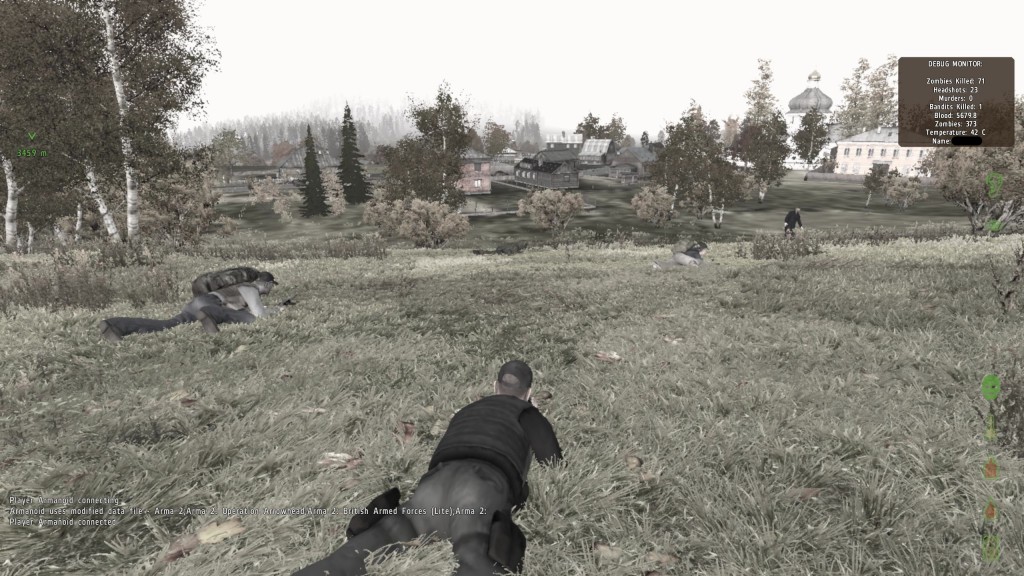
The quintessential DayZ experience: three guys in a field, about to loot through a town, with a single zombie in between them and beans.
Another exam period finished, another game thoroughly played.
For a long time, I’ve always wanted a realistic zombie apocalypse game that was more military simulation than arcade first-person shooter, and in terms of realism, DayZ — the mod for ARMA 2: Combined Operations that’s perhaps the most realistic zombie apocalypse game I’ve ever seen — delivers in spades.
It would be unfair to describe Arma 2 as anything other than a military simulation, as there’s so many aspects to the game itself — radios, ranging, realistic bullet physics, real weather, and so on. DayZ builds upon that, with a few custom weapons and, of course, zombies.
The way it begins is this: you’re dropped into a post-apocalyptic world, filled with zombies. You spawn on the beach, and what you do from that point on is entirely up to you, with the overall goal being to survive as long as you possibly can. Everything is out to get you (zombies, the environment, other players), and you start with basically nothing; I remember the days when you spawned with basic gear — a small pistol, a few bandages, ammo, and enough food and water to get you started. But a few weeks ago, the developer (Rocket) changed the spawning gear to be just a flashlight, a single bandage, and painkillers. Lest you starve or die of dehydration, your first task as a new Survivor should be to find a few rations — perhaps a water bottle that can be refilled from fresh water sources, or a can of lovely mountain dew.
What you do from that point on is up to you.
Do you lone-wolf it and try and find some kind of weapon to defend yourself from the zombies? Do you continually roam around the cities in your never-ending search for supplies? Or do you gear up and see what the wide open world of Chernarus has to offer?
It’s this combination of military simulation, zombie apocalypse, and open sandbox that means DayZ is so compelling to play. There’s so many things to do — if you’re geared up well enough, do you start setting up camp (provided you can find a tent)? Or do you start looking for a better mode of transportation? And if you run into another player, what then? Shoot on sight, or let them live? There’s so many questions that are asked of you during your time playing DayZ, and you’ll have to make all the choices. Will you explore the big bad world beyond the two or three main coastal towns?
Some choices are easier to answer than others: if you’re temperature falls below a certain amount, you better find yourself a heatpack, or stay indoors until you warm up. If you catch a cold, you better hope you can find antibiotics in a hospital, lest you attract zombies with your coughing and spluttering, along with the gradual decrease in your blood level to half what it normally is. If you’re thirsty, you should drink, and so on, and so forth.
Some of your actions even have consequences: if you’re hungry, you should eat. Consuming an easily-found can of beans only replinishes around 200 blood, but if you happen to come across an animal that can be killed, gutted, and the raw meat cooked, you’ll find that replenishes much more blood (800), but requires many more tools. You’ll need to find an animal, for one, then you’ll need a hunting knife to gut it, a hatchet to cut wood for the fire you need to cook the raw meat, matches to make a fireplace, at which point you can finally cook the meat you found on the cow’s dead body. Enjoying your steak raw, sadly, is not an option when you need the blood.
There’s so many ways to accomplish the same thing in DayZ. You can, for example, light a fire to warm up, instead of going indoors or finding a heatpack. There are many ways to replenish your blood, too: you can eat (beans or cooked meat), or you can get a blood transfusion, with the latter option requiring another player and a blood pack — an item only found in one of the four hospitals in Chernarus.
It wouldn’t be a military sim without weapons, and DayZ is the perfect blend, weapons-wise, between realistic and military. Common weapons you can find include crossbows, double-barrelled shotguns, winchesters, Lee Enfield rifles, and a whole assortment of sidearms, from the humble Makarov (the previous starting sidearm), to the trusty M1911, revolver, M9, and many more. It isn’t until you start looking for higher-tier weapons that the real fun begins: you can find scoped hunting rifles like the CZ500, and then you get into the true military weapons: M16 and M4 variants, AK and variants, light machine guns like the M249, silenced sub-machine guns, and even massively overpowered sniper rifles like the M24, DMR, and 50-cal M107. All guns make a distinctive sound when fired, so you can tell whether a player is firing an M1911, or whether you should be running for your life any second now because he’s got the gun with the biggest range in the game.
In true DayZ fashion, the zombies are affected by pretty much everything. If you run, you’ll attract zombies. If you crouch-run, you’ll attract zombies. If you crawl, you might attract zombies. If you fire a gun that makes a sound, you can expect all the zombies within a 50-meter radius to hear it, and if you’re firing a weapon in town, you better hope that there aren’t any curious players who come to investigate. That’s kind of the beauty of DayZ: there’s always another way. If you want to kill a zombie that’s between you and an objective, you can — either use a silenced gun, or even melee using the hatchet or crowbar. Flares attract zombies. Smoke grenades attract zombies.
And the zombies in DayZ? The zombies in DayZ hurt. If you’ve got aggro, they come at you at a frantic pace, hurt when they hit you, and can cause you to start bleeding out, or even break your bones. Thankfully, you can outrun zombies if you’re standing up and running — you can lose the zombies if you break line-of-sight and they don’t see (or hear) you again, but you can usually expect your running to attract even more zombies, especially if you’re running through a town. The line-of-sight thing is pretty interesting, and makes zombies fairly easy to evade if you’re running through a town — harder to lose if you’re out in an open field, but still possible. The line-of-sight is an interesting game mechanic anyway, and means even that newer players have a chance to survive (or they’ll learn stealth, which will help them out in the long run).
Health in DayZ matters. You have a blood meter, and if you’ve been in battle and taken a hit, sometimes you’ll start shaking from the pain, making accurate gunfire impossible. Thankfully, you can take painkillers to numb the pain. If a zombie breaks your bones, or if someone opens a door on you and you break a bone (it’s still an alpha, remember), you can fix yourself up with morphine. If you start bleeding out, you can bandage yourself up.
Yes, there’s quite a lot to DayZ — and we haven’t even discussed looting, vehicles, other players, playing in a group, or even death. But the reason DayZ works so damned well — even in its current alpha state — is that it’s just fun to play.
Diablo III isn’t quite the opposite in that it’s still fun to play, but it’s just not as compelling when compared to DayZ or even its predecessor, Diablo II. Diablo II was much, much darker than its successor, and Diablo III just feels as though it’s been given an overhaul for the worse. I know they’re essentially the same game, but it doesn’t feel as foreboding. It tries to be, what with the grotesque models and overall evil themes, but it just falls short of the level set by Diablo 2, and I’m not entirely sure why.
Don’t get me wrong, for the most part the graphical upgrades are more than welcomed (gaming at 800×600 isn’t my idea of fun these days), but instead of using those fancy new animations and graphics to make a better, gritter game, all Blizzard have done is put a few new colours in here and there, made gameplay simpler along the way, instead of making it darker, like a true sequel to Diablo II should be. I enjoyed Diablo II because it was exactly the kind of game I wanted to play — a dark and gritty game, filled with unknown terrors and semi-RPG elements.
Now, Diablo III feels like it just doesn’t have that special spark, and all because they’ve added a few new colours into the palette. The core gameplay hasn’t been changed all that much — Diablo III is still a dungeon crawler at heart — but it has been made to seem more attractive to newer players. The typeface is different, more inviting, which contributes a lot to the overall look and feel of the game. It’s a beautiful game, but there’s no compelling reason to play it besides the continuation of the storyline, and I’m honestly not sure if I would have played it at all if I wasn’t such a huge fan of the second Diablo game. For those that actually want a “nicer” dungeon-crawling game with a more upbeat tempo, there’s always Torchlight. Diablo was supposed to be the go-to game for dark and gritty, and the third one in the series just doesn’t deliver.
Which is a real shame.
DayZ is different in every way. Because it’s based on a military sim, it’s so much more different than your typical zombie apocalypse shooter. There’s not much actual gameplay, to be sure, but that’s half the fun: when you’re given no strict instructions and no real goal apart from just survival, you make do with what you have. At first, you’ll loot cities for all the beans you can get your hands on. You find a weapon to defend youself with. You kill any zombies that cross your path. You make your own decisions when it comes to killing other players, or letting them live. You team up with other players with the goal of survival, and maybe you’ll abandon them to save yourself from the horde of zombies, maybe you won’t.
But that’s just where the fun begins.
